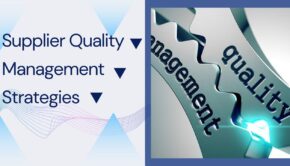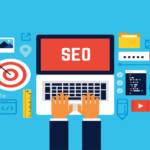8 Things You Should Include In Your Marketing Strategies
Businesses need marketing strategies to thrive in a highly competitive market. Marketing strategies detail the tactics a business plans to employ in order to reach potential customers and ultimately convert them to paying ones.
Beyond having a marketing strategy, it must be a working one. Businesses can develop working market strategies by creating an internal team or by outsourcing the work to marketing agencies, such as Caffeine Marketing. Outsourcing is the preferred option of the two because it saves time and money.
However, before outsourcing, businesses need to know all that should be included in their marketing strategies. This helps them to set marketing goals and align the marketing agencies’ efforts with them.
Here are 8 things that should be included in your business marketing strategies:
1. Your Target Audience
The people your marketing content will reach must be determined and factored into your marketing strategy from the beginning. Determining the target audience answers the ambiguous question of who your perfect customers are.
Here some forms of profiling that come to play:
- Age
- Gender
- Interest
- The wants and needs concerning the products and services your business provides
The target audience would then be the focal point of all your marketing efforts, social media, blog posts, and adverts.
Take note that your marketing will not only reach your target audience but it’ll also help streamline your efforts to a specific group that is more likely to be interested in your services. Focusing on these groups helps your business to easily capture their interest and convert them for business.
Having a target audience also increases the probability of turning them to business proponents within their immediate spheres of influence. A good example is a food brand that successfully markets to children. Children will convince their parents to buy such products to the point that it becomes a permanent product in the home. Even better if the product is suitable for adult consumption, then the entire family is likely to consume the product at least a few times.

2. Unique Selling Points of Business
Every business has a unique selling point. This is what sets a business apart from other businesses. Hence, if it’s projected properly to a target audience, it’ll help them understand why your services and products are a better choice.
Examples of unique business selling points include:
- Time of delivery
- Cost of purchase
- Bespoke services to customers
- Production methods
- Benefits customers stand to gain using your products and services.
After identifying these unique selling points, they should be integrated into your business marketing strategy. Also, they must be communicated clearly to your target audience and potential customers to boost the likelihood of conversions.
3. Communication Methods
Business communication methods are key to your marketing strategy, especially now that business is not necessarily done physically anymore. This makes it necessary for businesses to have as many means of communication.
There are so many means through which businesses can communicate with their clients. Hence, it’s important to factor a suitable means of communication into your marketing strategy.
Here are some communication methods your business can consider:
- Toll-Free Numbers: Toll-free numbers are an easy way for businesses to aid their business communication. They’re essentially business phone numbers that businesses acquire to enable their customers to call without paying for the calls made. This is because the businesses are the ones that pay off the cost of the calls to the service providers.
Beyond calling, toll-free numbers enable businesses to have a better brand image and they can also track their most effective marketing media. - Email: The majority of prospects owns an email account. Thus, it’s only normal for businesses to have working emails that allow customers to reach them.
This mode of communication allows businesses to set automated replies so that customers will know when they’ll be attended to in good time. It’s also used to further market the business. - Online Chats: Online chats are also used by a majority of people today. Businesses are now allowed to have business designated accounts on some online chatting platforms, such as Facebook and Instagram, which even facilitates the communication process better. Having such accounts for your business will enable customers to easily reach your business.
Online chats can also be integrated directly into your business website to answer any business queries. - Social Media: Although social media is mainly used for marketing, it can be a good means of communication for customers, too. With the tagging and reply feature on posts and direct messaging on these platforms, customers can take advantage of this medium of communication as well.
- Video Calling: Some businesses consider video calling a great communication option for their businesses. While it might be a big move to have video calling for your business, it can be highly effective when you need to demonstrate things to clients or clients who need to show exactly what they need to get sorted. With many platforms offering video calling services, they’re also essentially free.

4. Promotion Strategy
The strategy you plan to use for promoting your message is an important aspect of your overall marketing strategy. Promotion involves putting out your business’ marketing information for the public to see.
There are so many business promotion methods today. Yet, there are a few of these effective methods. Here are some of the most effective methods of promoting your business’ product and services:
- Event Marketing: Event marketing is regarded as experiential marketing. In these events, memorable experiences are created through virtual or physical connections with brands, products, and services. These events provide an opportunity for businesses to directly interact with leads and pitch their business to them. They’re also great at increasing sales and brand exposure.
- Print Materials: These are the marketing materials that are printed to promote a business. Examples of these include fliers, billboards, print brochures, catalogs, and business cards.
- Online Marketing: This method of marketing involves the digital marketing of your business over the internet. The printed marketing materials can also be used for promotion, with only a few changes needed. This also involves Search Engine Optimization (SEO) and content marketing for companies with a website.
The different formats of content that may be used online include written, audio, and video formats. - Social Media Marketing: Social media marketing is a form of online marketing, but it deserves a more defined section these days. Social media platforms have people ranging in billions actively using them. This means that it’s always a ready place to direct your marketing efforts.
However, business brands must take note that other businesses are competing with them on social media. This means they need a working strategy to make their efforts work on social media.
5. Customer Retention Strategies
Outreach efforts are great, but they’re only as good as the customer retention strategies that have been put in place. It’s common to see businesses driving marketing efforts towards new customers while forgetting to engage and reward their existing customers for future business.
Customer retention strategies that allow customer engagement include providing free tutorials on products purchased, communicating new offers, asking reviews, and monthly newsletters. Those geared towards rewarding customers include customer loyalty programs and referral programs.
6. Pricing
Pricing will determine who your products or services would eventually appeal to. If your target is the luxury market, then your pricing must be competitive with the existing businesses in your industry. Otherwise, a low price might hamper your ability to get luxury clients to do business with you.
Also, if you want to offer varying prices based on various factors, such as specifications, limited editions, and color, it’s important to factor these into your pricing. Here, you must be able to effectively communicate your product’s value to customers. That way, business is more likely to play outright.
7. Marketing Estimates and Costs
Business marketing strategies should include the costs and estimates of the marketing efforts you want to engage in. Documenting the likely costs of marketing may help guide businesses on which of the efforts they should employ in the short term and which ones should be left to the long term.
The estimates also allow the businesses to determine the expected Return on Investment (ROI) on each of the marketing efforts you have put to play.
8. Clear Marketing Goals
Marketing goals are very important to a business’ marketing strategy. These goals are the only standard a business will be able to weigh their implemented marketing efforts in the future. It also helps the marketing team or agency to keep driving the marketing strategy until the goals and objectives of the marketing strategy are achieved.
When an evaluation of a business’ marketing goals is done, it will guide them in knowing which aspects have been working, which ones require more effort, and what must ultimately be removed.
Takeaway
Businesses without an effective marketing strategy can still engage with the business world. However, such businesses are bound to fail because they won’t approach their marketing with clear cut goals and guidance.
As a business, you can either develop your marketing strategy before reaching out to a marketing agency or request them to work you through one. Your target audience, unique selling point, communication methods, pricing, and marketing goals should be included in a business marketing strategy. Strategies that should also be included in a marketing strategy are promotion and customer retention strategies.
















